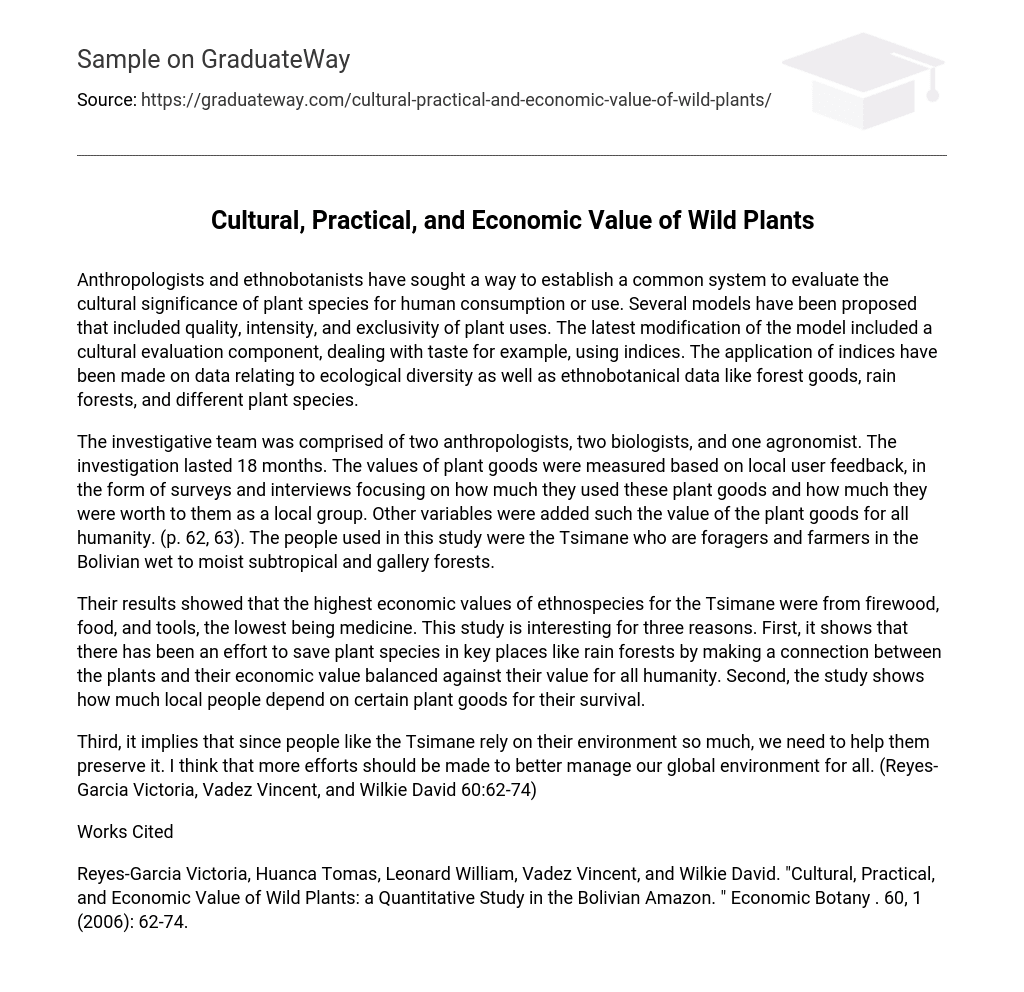Anthropologists and ethnobotanists have sought a way to establish a common system to evaluate the cultural significance of plant species for human consumption or use. Several models have been proposed that included quality, intensity, and exclusivity of plant uses. The latest modification of the model included a cultural evaluation component, dealing with taste for example, using indices. The application of indices have been made on data relating to ecological diversity as well as ethnobotanical data like forest goods, rain forests, and different plant species.
The investigative team was comprised of two anthropologists, two biologists, and one agronomist. The investigation lasted 18 months. The values of plant goods were measured based on local user feedback, in the form of surveys and interviews focusing on how much they used these plant goods and how much they were worth to them as a local group. Other variables were added such the value of the plant goods for all humanity. (p. 62, 63). The people used in this study were the Tsimane who are foragers and farmers in the Bolivian wet to moist subtropical and gallery forests.
Their results showed that the highest economic values of ethnospecies for the Tsimane were from firewood, food, and tools, the lowest being medicine. This study is interesting for three reasons. First, it shows that there has been an effort to save plant species in key places like rain forests by making a connection between the plants and their economic value balanced against their value for all humanity. Second, the study shows how much local people depend on certain plant goods for their survival.
Third, it implies that since people like the Tsimane rely on their environment so much, we need to help them preserve it. I think that more efforts should be made to better manage our global environment for all. (Reyes-Garcia Victoria, Vadez Vincent, and Wilkie David 60:62-74)
Works Cited
Reyes-Garcia Victoria, Huanca Tomas, Leonard William, Vadez Vincent, and Wilkie David. “Cultural, Practical, and Economic Value of Wild Plants: a Quantitative Study in the Bolivian Amazon. ” Economic Botany . 60, 1 (2006): 62-74.





